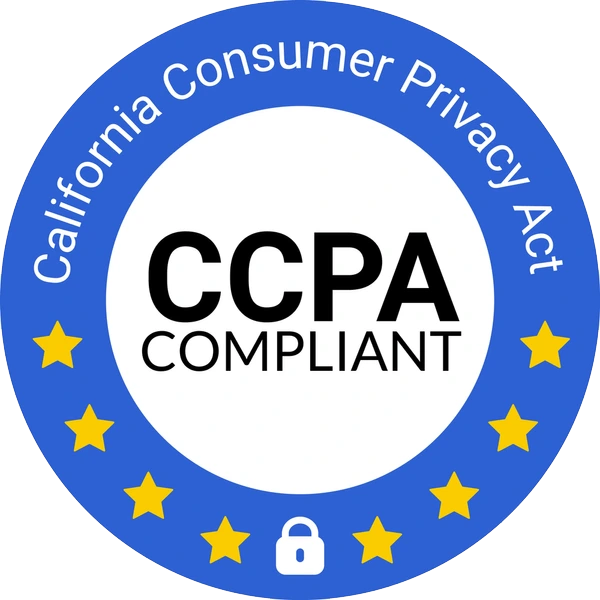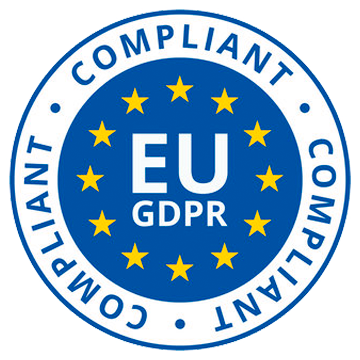A business proposal is a critical document every business person needs to know how to write. That’s because it spells the thin line that exists between the success or failure of a business. An enterprise lays the ground for its success, expansion, and maintenance of strong, quality relationships with an excellent business proposal.
That said, writing a business proposal can be a daunting task that calls for straightforwardness and honesty right from the start. It’s no surprise that some people take days or even weeks to draft one targeting investors and markets, only for the proposals to fail.
Know who read your proposal
Share proposals as tracked Sizle links. Get real-time alerts when prospects open and how long they engage.
Trusted by 30,000+ users. No credit card needed.
Conversely, some people only commit a few hours of their time to write a business proposal that gets accepted right away within a single submission. For readers wondering how to do that, stay put. This article is all about assisting businesses to create professional winning proposals.
What is a business proposal?
A business proposal is a formal document covering the entire project a prospective client needs to be delivered. The document’s purpose is to persuade potential customers to buy your goods and services at defined costs. By encapsulating the entire project, you make it easy for the client to make an informed decision.
Business proposals do the following:
- Clearly define the process, costs, and timelines, setting crystal clear expectations.
- Show the value of work that the business will be doing. It should convince the client that the work is worth the price.
- Tie the project’s components back to the goals of clients.
- Present the perfect opportunity for businesses to show the exact personalization and thoroughness that clients expect from them all through a project.
It’s worth noting that a business proposal is not a business plan. The two documents are equally important but very different.
A business proposal is only designed and written specifically for an opportunity or request. It keeps a business on track while at the same time giving the client a clear insight into the goods or services the business offers.
Types of business proposals
Most business proposals fall under two categories:
1. Solicited business proposals
Businesses avail these proposals when a buyer or client interested in their goods or services requests for one. Additionally, a business can write in response to an advertisement targeting their goods published by a potential client or customer.Because the proposals address the buyer directly, they have a higher win rate.
2. Unsolicited Business Proposals
These proposals target potential buyers who may be interested in your products but have not made an explicit request for them.
Writing a winning business proposal
There are many variations and business proposal examples. But the secret to writing a winning business proposal is understanding what to include in it. Otherwise, a business may stand no chance of getting its idea through.This section covers factors one should consider when writing a business proposal. It also includes the key elements of a winning business proposal.
Factors to consider when formulating a business proposal
Here’s what to factor in to write excellent, winning business proposals:
Using a business proposal template
A proposal template is a document that covers in detail about 90% of everything you want a single proposal to have. The template features an excellent introduction, the best pricing strategy, a brilliant title page, the best type of proof, among other things.
If one intends to create their business proposal template, the idea is to look for some of the best winning proposals they’ve ever written, resulting in the sale of a product or service. Then from each of these proposals, they can borrow the most effective elements and combine them in the template. For those using proposal software, the process should be easy. Identifying the proposals that can work on the target audience isn’t a difficult task.
However, time may be a limiting factor in coming up with a proposal, or the business may have never sent one before. In such a case, Sizle has hundreds of templates covering various industries such as education, finance, biotechnology, healthcare, and management consulting, in their example library.
In the template, fill out details such as:
- Client information
- Information on the particular offer
- Pricing details, detailed specifications, timelines
- Proof section with an offer similar to what the business is sending
- Other relevant details
After ensuring the template covers the above details, the business proposal is as good as complete. The idea of a template is to help businesspeople write proposals within a very short time, say 20 minutes, rather than several hours.
What the customers want
In most cases, customers will not reveal every detail of what they need but expect business owners to answer their problems. This is especially so when crafting unsolicited business proposals.
Ensure the proposal is detailed and comprehensive. One can also create an ideal customer profile with information regarding their age, location, and where they hang out online. It’s an excellent way of getting an idea of what a business owner can say and how best to say it. Additionally, let the proposal resonate with the potential buyers it targets.
What questions customers are likely to ask
Try to walk in potential clients’ shoes. That way, whatever questions they ask, one is in a position to answer them.
For example, if a business is offering management services, the client would likely want to know why the firm is charging high amounts of money for the solutions it’s providing. Additionally, they might want to know whether the services will be beneficial to their projects or businesses. Be ready with convincing answers.
People who have written proposals before can sometimes tell the kind of questions to expect from prospective clients. Fortunately, no question should be too hard to answer if one is conversant with the customer’s industry and style. Actually, you’re best-placed to convince them that you’re the ideal person for the job to offer amicable solutions.
Why they should choose your business
Remember, chances are high that other competitor businesses have identified what customers need, and they too will include it in their proposal. That makes the competition for the tender or contract even stiffer.
Therefore, a business proposal must be unique, highlighting one’s experience, qualities, talents, and qualifications to convince the customer that by all means, your business is the best-suited to provide the goods or services they need.
Including a business portfolio in the proposal is of great value. A business showcases its capabilities by including testimonials, making the potential buyers aware of what to expect from them.
Whether to use proposal software
Today it’s rare to find a business person writing a business proposal. Instead, they use proposal software to create a proposal PDF or a Word version. Some of the advantages of proposal software include:
- It’s web-based. That means there’s no need to send clients Word or PDF files. Instead, one only needs to send clients a link to the proposal.
- It optimizes proposals for various devices. Whether using a phone, tablet, or laptop, the proposal feels and appears the same.
- It allows the use of proposal templates.
- It’s easy to track the actions of customers. When they read the proposal, forward it, or sign it, one receives a notification.
- It simplifies proposal signing with e-signature.
- Making payments is easy as buyers can pay from the proposal using Stripe, credit card, PayPal, or any other acceptable means of payment.
- It allows live chatting. As clients read the proposal, they can engage you through live chats.
- One can use different Integrations. What a business uses for sales workflows, such as HubSpot, MailChimp, Salesforce, and Zapier, is available.
- It leaves no room for guesswork. The proposals are exhaustively detailed.
- It makes proposal writing quick. One only needs minutes, not hours.
So the next time a business person intends to write a business proposal, the reasons outlined above are enough to make them consider using proposal software. It’s time to ditch Word.
Structuring a winning business proposal
There are several elements every winning business proposal should incorporate in its structure. Although the introduction, body, and conclusion are usually standard, other elements to include in a proposal depend on the specific situation at hand.
Here’s how business people should structure their business proposals:
1. Title page
Every proposal should have a title page featuring some text and an image to address the target client. The page should be well-designed because it’s the doorway to the proposal.
2. The introduction / executive summary
Every winning proposal starts with a brilliant introduction or executive summary. The executive summary should focus on the solutions to the customer’s pain points.
This summary, together with the pricing section, form the most-read parts of a proposal. Therefore, it should be easy to scan within the shortest time possible.
If a business is offering financial services, this is the part to show and stress to the clients that it can deliver. It’s that part of a proposal that should leave the customers with the urge to read the rest of the proposal.Although the introduction varies in size depending on the contract a business is targeting, one or two short paragraphs are often ideal.
Whenever possible, businesspersons should follow the client’s terms. The focus here should be entirely on showing how the products or services will benefit the customer.
3. The scope
This part forms the next section of a proposal. It’s the part where one describes a solution in detail. Ensure that the client agrees with you on what you intend to provide and the means through which you’ll avail it.
One needs to approach the scope very carefully. If it’s not completely clear, it may end up costing the business contract hundreds or even thousands of dollars.
4.The detailed specification
Depending on the products or services one is selling, this part may vary from one business to another.
For instance, people selling healthcare products or services can include detailed information on the features and qualities of their health products and the credentials and qualifications of their healthcare staff.
The idea is to make the client understand what you’re offering them and how you’ll get the job done or deliver everything required. If the deal faces some challenges, this is where both parties refer to it for clarification. It keeps a business on its toes in terms of accountability.
Make it crystal clear to the client what they can expect from you. Use plain English to make the part easily understandable. It increases the client’s trust in you.
In addition, this is the ideal part for you to talk about your company, what it entails, the products or services it offers, how long the business has existed, and what is unique about it. Mind you; you should focus more on the client, not the business. Therefore, anything you write about the business should be brief.
5. The timescales
The client expects you to give them an idea of when they can expect the work to be complete.
For example, a business may be dealing with printing and delivering some educational materials or working on an educational project. The proposal must indicate delivery timelines for the goods or when the work will end.
Try to be specific about what gets done and when. Ensure to give yourself enough time to deliver.
By allocating more time to complete the project, you’re likely to please the client if you complete it earlier than the client expected. What’s more, should something go wrong, there’s ample time to rectify it.
6. The proof
This section proves to the client that one can actually deliver on what they’re promising in the proposal. The proof must be solid with several excellent case studies.
Here are some things to include in a winning business proposal as sufficient proof a business can deliver:
- Testimonials
- Screenshots from a client appreciating your hel
- Video case studies
- Voicemail recordings
It’s also good to include the qualifications and credentials of your staff members and managers. They’re the people who will ensure a product or service gets delivered in top-notch conditions. Hence, they’re at the center of quality deliverables.
Therefore, proof that they are the best team for the job builds a client’s confidence. Use any means available to prove to the client that, undoubtedly, your business is the best suited to award the contract.
7. The price
The pricing section includes how one will charge the client. Of course, one must explain their rates. Place this section towards the end of the proposal, allowing you to show the client the value of your offering before quoting the price. It’s the best way of justifying the cost of your products or services.
In this section, include all the services with their respective costs.
It also pays to be exhaustively transparent, especially in things to do with money. Don’t call this section the “pricing section.” Instead, use names that create a picture of an investment to the client, such as:
- Return on investment
- Investment
- ROI
Remember, often clients are not keen on spending money but investing it.
8. The guarantee
Although this part is not compulsory, it’s a great way to entice clients to award you the contract. Avoid giving money-back guarantees. Rather, assure them of a part of the timescale or service.
Other important things to include
Here are some other things to include in a business proposal:
Steps guiding the client on what’s next
After one is through with writing the contract, it’s good to direct prospective clients on the next course of action. It may look like an easy task, but it shows you pay attention to the basics.
Just let the clients know how they can buy from your business and the steps to follow. The basics mean everything in a winning project proposal.
To make a perfectly-timed follow up, use a free tool to track when viewers open your documents in real time.
Terms and conditions
On a separate page, the proposal should include the Terms and Conditions or Terms of Business. This section acts as a cover for both the business and the client.
Once the client signs it, they’ve basically entered into a contract with you.
Tone and language of a business proposallLetter
Use simple language with no technical terms and industry jargon. Let everything be clear, precise, and to the point.Try to balance between being real and following the basic formalities of writing business proposals.
Hyperbolic language is highly discouraged because it can come across as irony and is unlikely to promote the trust you want to build between the client and you. In short, let the tone be casual-to-formal, just like the one used in an office during meetings.
Avoid being humorous because the client is not known to you. Create some excitement in the client and confidence with commanding words showing action-taking where necessary.
Final words
After one completes proposal writing, the only thing left is to submit it and make follow-ups. Especially when the proposal is written using proposal software, following up with the client is pretty easy. Any action they take, you’ll get an alert, and you can chat all through as you answer any questions they might have.
However, writing a business proposal is just the beginning. The aim is to win the contract, and once this happens, that’s when the real work begins. Ensure the same commitment demonstrated when writing the proposal is evident when working on the project.
Now that how to write a winning business proposal is clear, so go ahead and write a new one to win over the next client in line. When you’re done, you can securely send, track and digitally sign it for free.
Turn docs into deal intelligence
Sizle shows what really happens after you hit send.
Free 7-day trial
Unlock insights instantly
Join 30,000+ professionals



